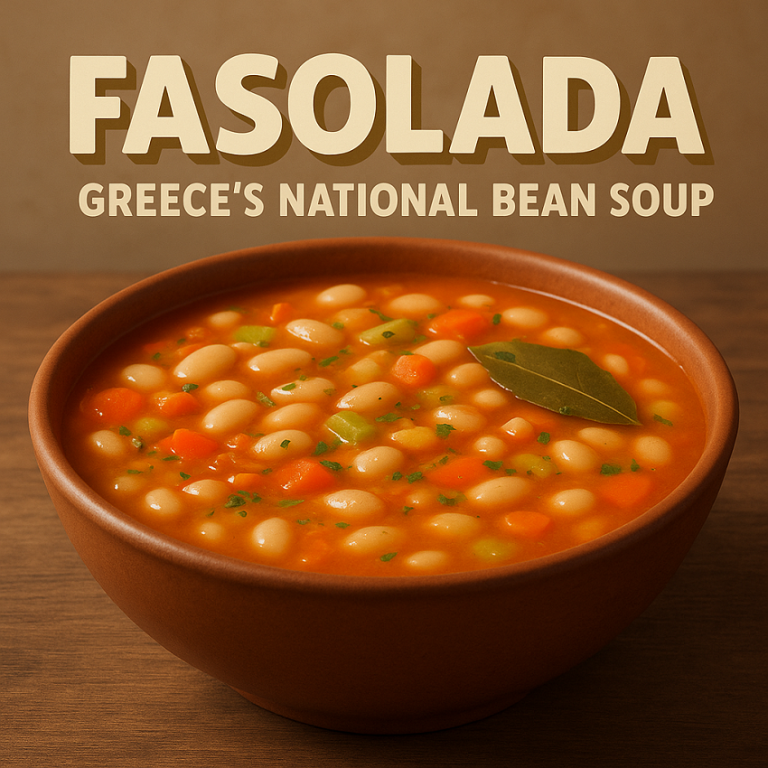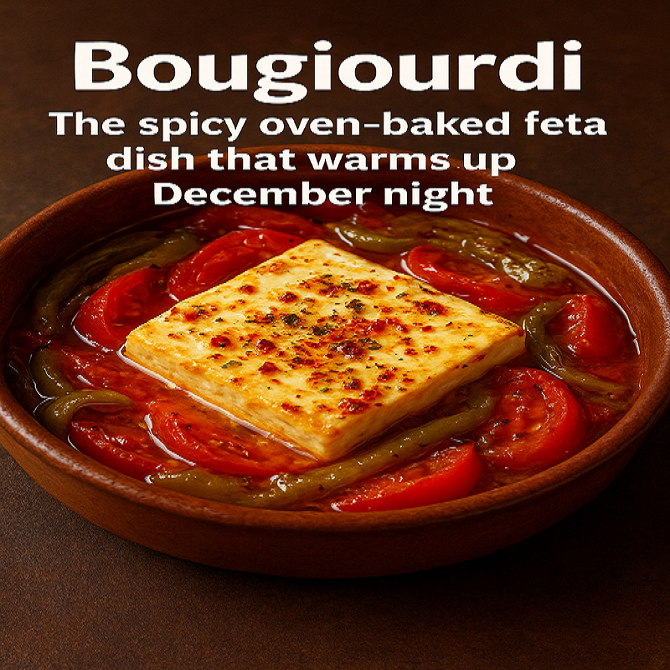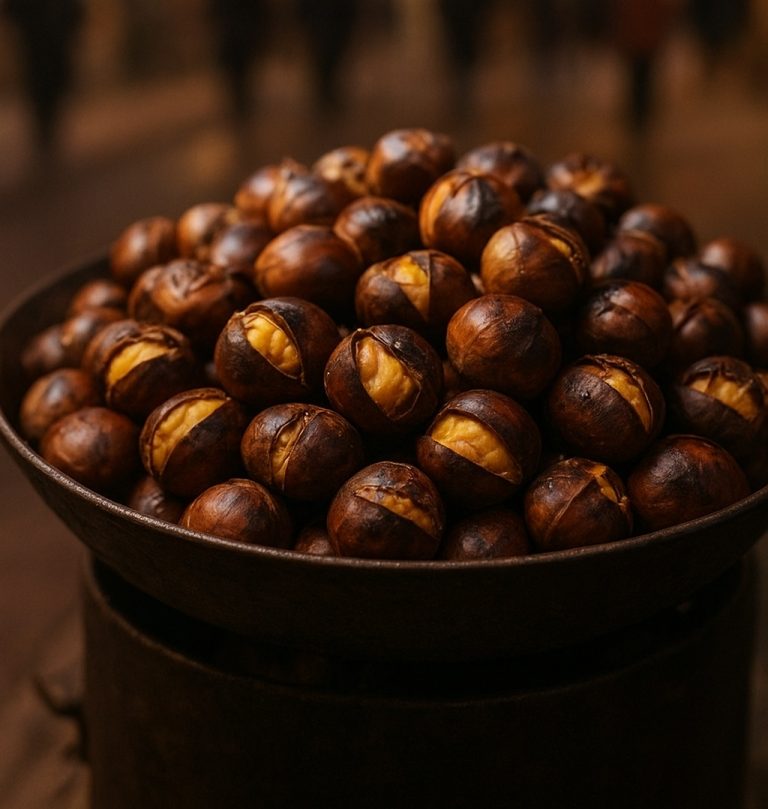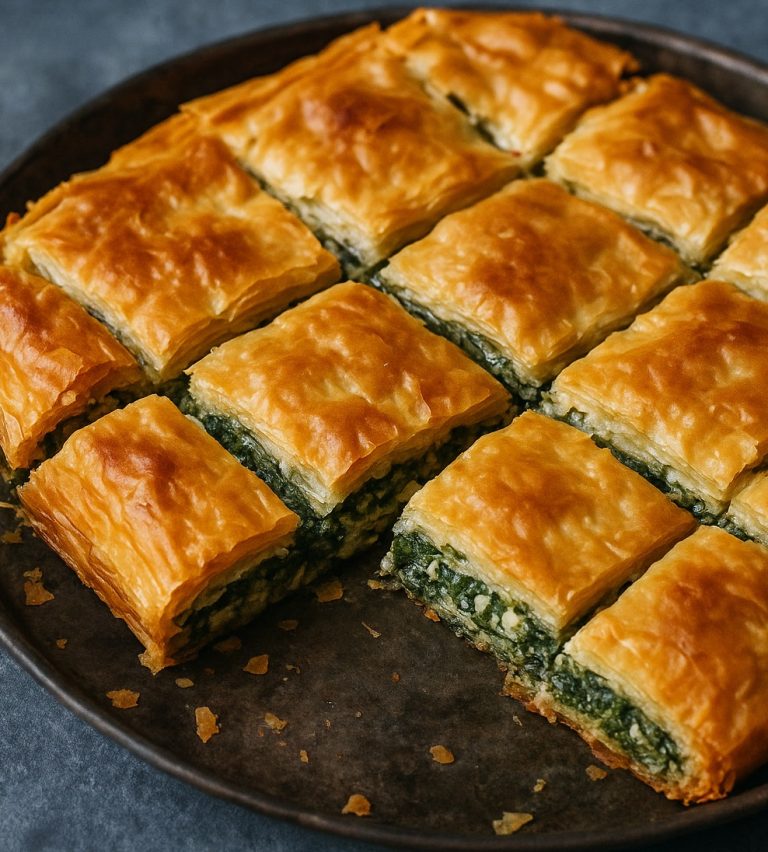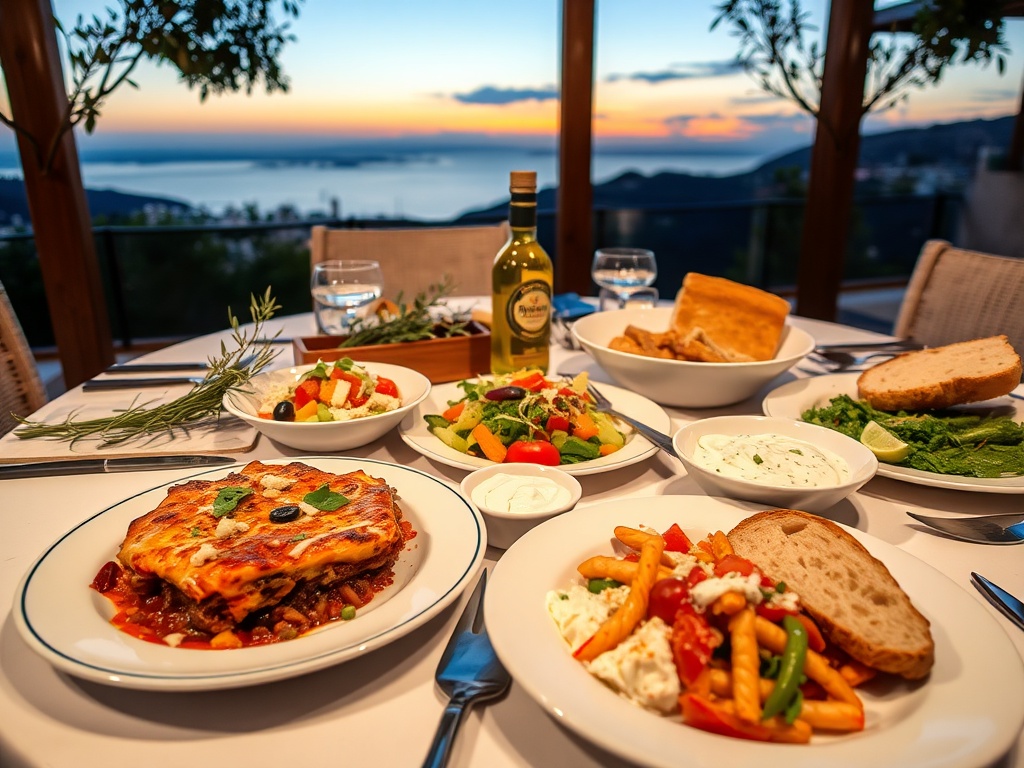
Greek cuisine is a delightful fusion of flavors, history, and culture that captures the essence of the Mediterranean lifestyle. Each meal tells a story, from the ingredients to the preparation and, finally, to the table. Let’s take a journey through a day in the life of a typical Greek meal, exploring its components, preparation, and the communal spirit that surrounds it.
Morning: The Breakfast Ritual
In Greece, breakfast is often a simple affair, with many opting for a strong coffee to kickstart their day. Traditional Greek coffee, rich and aromatic, is brewed in a small pot called a briki and served in small cups. However, when Greeks do enjoy breakfast, it typically includes:
- Greek Yogurt: Known for its thick, creamy texture, Greek yogurt is often enjoyed with a drizzle of honey and a sprinkling of walnuts or seasonal fruits like figs or berries. This nourishing start is packed with protein and a touch of sweetness.
- Bread and Olive Oil: Freshly baked bread, often still warm from the oven, is a staple. It’s typically served with high-quality extra virgin olive oil for dipping, showcasing the richness of Greek agriculture.
- Feta Cheese: Creamy and tangy, feta is often accompanied by fresh tomatoes, olives, or cucumbers. This combination not only offers a burst of flavor but also reflects the Mediterranean diet’s emphasis on fresh produce.
As the day begins, the aromas of fresh bread and brewing coffee fill the air, setting the stage for a day rich in flavors and communal experiences.
Midday: The Lunch Experience
Lunch is a significant meal in Greece, often enjoyed with family or friends, and is typically the largest meal of the day. It usually features several courses, reflecting the Mediterranean philosophy of eating with variety and moderation.
Typical Lunch Components:
- Appetizers (Meze):
- Tzatziki: This refreshing yogurt-based dip, made with grated cucumbers, garlic, and dill, is served with warm pita bread. It’s a perfect starter that whets the appetite and prepares the palate for the meal ahead.
- Dolmades: Grape leaves stuffed with a mixture of rice, herbs, and sometimes minced meat, dolmades are a beloved meze. They are often served with a squeeze of lemon, adding a zesty flavor.
- Main Course:
- Moussaka: A quintessential Greek dish, moussaka is a layered casserole made with eggplant, minced meat, and a creamy béchamel sauce. Baked until golden, it’s a comforting dish that showcases the home-cooked essence of Greek cuisine.
- Grilled Fish or Meat: Freshly caught fish or marinated meats are grilled to perfection, often seasoned with salt, lemon, and aromatic herbs like oregano or thyme. The simplicity of the preparation allows the quality of the ingredients to shine through.
- Salad:
- Greek Salad: A colorful mix of ripe tomatoes, crisp cucumbers, bell peppers, red onions, olives, and feta cheese, dressed with olive oil and oregano. This salad is both refreshing and nutritious, embodying the essence of Greek flavors.
- Dessert:
- Baklava: A sweet pastry made of layers of filo dough, filled with chopped nuts and sweetened with honey or syrup. It’s a delightful way to end the meal, offering a satisfying crunch and sweetness.
The Preparation
Lunch often begins in the late morning, as families gather in the kitchen, a central hub of activity. The preparation is a communal effort, with everyone contributing. The smell of simmering tomatoes, garlic, and spices fills the air, creating a warm and inviting atmosphere. Cooking together is not just about food; it’s a bonding experience filled with laughter and storytelling.
Afternoon: The Siesta and Snack Time
After a hearty lunch, many Greeks enjoy a siesta, especially during the hot summer months. This short rest allows families to recharge for the later part of the day. However, as the afternoon rolls on, a light snack might be in order. This could include:
- Koulouri: A sesame-crusted bread ring, often found at street vendors, koulouri is perfect for a quick bite. It’s chewy and slightly nutty, making it a popular snack among locals.
- Olives: Served with a slice of cheese, olives are a beloved snack across Greece. With a variety of types—green, black, Kalamata—each brings its unique flavor and texture.
- Fruit: Seasonal fruits, such as oranges, pomegranates, or grapes, are often enjoyed during the hot afternoons. They provide a refreshing, hydrating treat that complements the Mediterranean climate.
Evening: The Dinner Celebration
Dinner is often the highlight of the day, a time to unwind and enjoy the company of loved ones. It usually begins late, around 8 or 9 PM, and can last for hours, especially when entertaining guests.
Dinner Components:
- Appetizers:
- A variety of meze, including spanakopita (spinach pie), calamari, and fava (a purée of yellow split peas), are served to begin the meal. These small plates encourage sharing and conversation.
- Main Course:
- Souvlaki: Skewered and grilled meat—often pork, chicken, or lamb—is served with pita and various sauces like tzatziki or a spicy red sauce. It’s a popular street food that has made its way into home cooking.
- Pastitsio: A baked pasta dish similar to lasagna, layered with meat sauce and béchamel. It’s a hearty dish that is often prepared for special occasions.
- Side Dishes:
- Roasted Vegetables: Seasonal vegetables, such as zucchini, bell peppers, and potatoes, are drizzled with olive oil and herbs, then roasted until tender. This dish highlights the natural flavors of fresh produce.
- Dessert:
- Loukoum: A traditional sweet that accompanies coffee after dinner, loukoum is a confection made from sugar and starch, often flavored with rosewater or mastic. It’s a delightful end to the meal.
The Gathering
Dinner is more than just food; it’s a celebration of life and relationships. Families and friends gather around the table, sharing stories and laughter. The meal is often accompanied by wine, usually a local variety, and sometimes ouzo, a traditional anise-flavored spirit that adds a festive touch.
The atmosphere is lively, with conversations flowing as freely as the wine. This time spent together fosters deep connections and strengthens bonds, reinforcing the role of food in Greek culture as a means of bringing people together.
Conclusion: The Heart of Greek Culture
A day in the life of a Greek meal is a reflection of the country’s rich heritage and strong community ties. Each meal is an opportunity to bond, celebrate, and enjoy the simple pleasures of life. From the early morning yogurt to the late-night conversations over coffee and dessert, Greek meals are not just about sustenance; they are about love, connection, and tradition.
Whether shared at a bustling tavern or a quiet home, every meal is a feast for the senses, steeped in history and flavor. The communal aspect of dining in Greece fosters a sense of belonging and continuity, making each meal a cherished experience that nourishes not just the body, but the soul.
